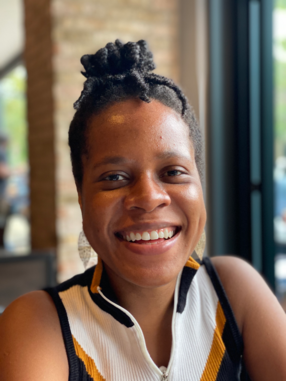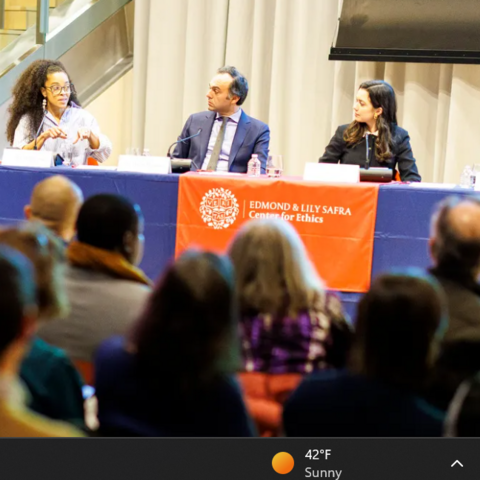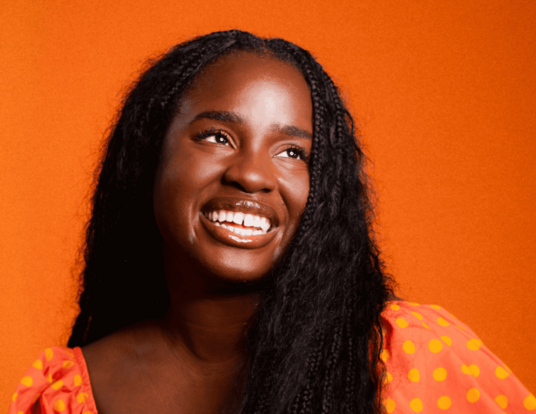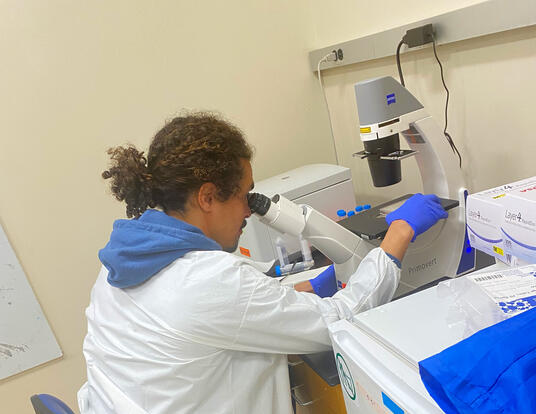Taking Aim at Another Epidemic
Small creates new knowledge to aid in the fight against diabetes

The United States is in the midst of an epidemic. The illness can be fatal. The old are particularly vulnerable, but the young are increasingly affected as well. The poor and members of communities of color suffer disproportionately. The costs to the economy are staggering.
The disease? Diabetes.
“Diabetes is the seventh leading cause of death in the United States,” says Jonnell Small, a PhD student in chemical biology at Harvard’s Graduate School of Arts and Sciences. “One in three adults are at risk to get it. Most don’t know it. And the rates are rising rapidly. The number of Americans diagnosed with diabetes has more than doubled since 2000.”
Small explores the causes of—and potential new treatments for—an illness that afflicts tens of millions of Americans. Her research advances understanding of type 2 diabetes, the form of the disease which accounts for 90 to 95 percent of all diagnoses. And as part of a team at the Broad Institute of MIT and Harvard, Small uses ”high-throughput techniques” that enable her to test thousands of compounds in search of those that show promise for arresting the death of the insulin-producing cells that regulate blood sugar.
A Glove and a Pancake

Small’s research centers on pancreatic beta cells (PBCs)—those responsible for the production of insulin, which regulates blood sugar. She explains that in type 2 diabetes, these cells become part of a vicious cycle of stress and death.
“At the beginning of type 2 diabetes, patients cannot regulate their blood glucose,” Small says. “The body isn't reacting to insulin as it used to. It needs more to activate glucose homeostasis, so patients have to take supplemental insulin. At the same time, they’re also losing the cells that produce insulin. That puts more pressure on the cells that are left to carry on the work. It may be that the stress on the remaining cells causes them to die. And so, it becomes an iterative cycle.”
At the Broad Institute, Small uses robotic automation and other high-throughput technologies to screen an enormous library of chemical compounds to find those which may protect PBCs against death. Several chemical compounds in this library were generated through a process called diversity-oriented synthesis (DOS), which creates diverse chemical structures that fill more three-dimensional space and thus have a greater chance of yielding compounds that can interact with the cellular machinery.
To understand why DOS is so important, think of chemical biologists in the past as trying to fill a glove with a pancake. The small molecules they synthesized were very flat. The structure of a protein, however, is more three-dimensional, with pockets like the fingers of a glove. To have the best chance for activity, synthesized molecules must fill those spaces. Small says that working with DOS compounds enables her to do just that.
“The DOS library and the diversity-oriented synthesis method is aimed at creating compounds that fill a three-dimensional shape so that you’re not just dealing with ‘pancakes,’” she says. “With DOS you have molecules with diverse chemical groups displayed more three-dimensionally in space.”
Even with the DOS library and automation, it can still be difficult to find active compounds. That’s why it’s been a boon for Small to be able to utilize a smaller library of biologically active molecules originally developed to treat cancer and other diseases.
“Compounds already proven to have biological activity are also likely to be potent in other diseases,” she explains. “In fact, we haven’t even started identifying the biological targets for the active DOS compounds yet because the hits we got from the biologically active compounds were so fascinating!”
After starting with a library of around 19,000 compounds, Small is now focused on one “very cool and interesting candidate” that seems to protect beta cells in an environment of high sugar and fatty acids. She says that one of the most exciting aspects of her work now is that it may contribute both to new treatment strategies for diabetes and to a better understanding of the disease itself.
“This compound was previously identified to decrease inflammation,” she says. “To find its involvement in diabetes is interesting because inflammation is increasingly being shown to play a significant role in type 2 diabetes pathogenesis. This work suggests that inhibition of inflammation can actually improve PBC health in type 2 diabetes.”
We haven’t even started identifying the biological targets for the active DOS compounds yet because the hits we got from the biologically active compounds were so fascinating!
Passion and Inspiration
Small says that she entered Harvard’s PhD program knowing that she wanted to pursue a career in the private sector so that she could put her education to work finding new therapies for diseases. For that reason, she says she’s excited about the internship she’s just started with the Cambridge-based venture firm MPM Capital, where she will evaluate new treatments for a variety of ailments.
Between research and the internship, Small’s GSAS experience has positioned her to have a big impact after graduation. One way she’s trying to have an impact now, however, is by recruiting more people of color into the sciences. A longtime member of the Minority Biomedical Scientists of Harvard, Small, who was born in Jamaica, was a mentor for the Summer Honors Undergraduate Research Program (SHURP) offered by the Division of Medical Sciences at Harvard Medical School and the Graduate School of Arts and Sciences. She says that SHURP provides underrepresented minority college students an opportunity to gain training and mentorship in scientific research.
“The idea is to be a source of inspiration for students who don't know they can go into the sciences,” she says. “Or maybe they have a passion for the sciences, but they don't know how to apply to graduate school. The SHURP program exposes students to those possibilities and establishes a sense of community with them.”
As vice president of the Harvard Biotech Club, Small says that she wants to make sure that the drive for diversity in the sciences extends past the walls of the classroom and into the boardroom. To that end, she’s recently helped recruit scientists and executives of color to talk about creating truly diverse organizations. And, as with her research, she’s just getting started.
“We're working hard to create new partnerships and connections,” she says. “We’re part of a group effort with others at Stanford, MIT, and schools in New York City to present the case for why there should be more diversity in biotech and what steps we can take. Stay tuned in future months and years to see how that goes. I’m really excited about it!”
Photos courtesy of Jonell Small, Creative Commons
Get the Latest Updates
Join Our Newsletter
Subscribe to Colloquy Podcast
Simplecast





